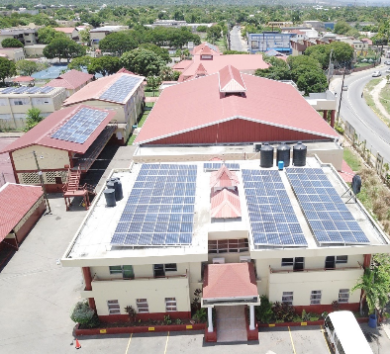

(Reuters)
Healthy women’s breasts contain small numbers of cells with genetic changes characteristic of invasive breast cancer, two separate papers reported on Wednesday, potentially increasing the risk of incorrect diagnoses.
With molecular diagnostic tools being developed to detect cancer at earlier stages, the presence of cells with aneuploidy – a gain or loss of chromosomes – also raises questions about what is normal, the authors of one study wrote in the journal Nature.
“A cancer researcher or oncologist seeing the genomic picture of these normal breast tissue cells would classify them as invasive breast cancer,” study leader Nicholas Navin of The University of Texas M.D. Anderson Cancer Center in Houston said in a statement.
Using tissues from 49 healthy women undergoing breast reduction surgery, Navin’s team studied the epithelial cells that line the ducts and lobules of the breast. These are the cells that are believed to give rise to cancer, they explained.
A median of 3.19% of the epithelial cells in these normal breast tissues were aneuploid, and over 82% of these had changes commonly found in invasive breast cancers, according to the report.
The number of cellular changes rose with age, the study also found. It is not clear what risk factors, if any, would lead to these cells becoming cancerous.
A separate team of researchers analyzed breast epithelial cells from 28 healthy women. In nearly all of the women, about 3% of the cells contained genetic alterations commonly associated with cancer, they reported in Nature Genetics.
“It’s striking to see cancer-like mutations happening silently and at low levels in the cells of perfectly healthy women,” study leader Dr. Samuel Aparicio of the University of British Columbia in Canada said in a statement. “While harmless on their own, these changes could be the basic building blocks of breast cancer.”
Epithelial cells are found throughout the body, so the new findings have implications not just for breast cancer but potentially for other cancers, Navin said.
“This doesn’t necessarily mean that everyone is walking around with precancer, but we need to think about ways to set up larger studies to understand the implications for developing cancer.”
Endometriosis, and fibroids increase risk of early death
Women with endometriosis or uterine fibroids might be at higher risk for premature death, a large U.S. study suggests.
Both of these common gynaecological conditions are associated with higher long-term risks such as high blood pressure, heart disease, and some cancers, but their effect on risk of death before age 70 remains unclear, researchers said on Wednesday in The BMJ.
The Nurses Health Study II tracked 110,091 women who were aged 25 to 42 years in 1989 and had no history of hysterectomy, cardiovascular diseases, or cancer. Roughly 12,000 had endometriosis, a painful chronic condition where tissue similar to the uterine lining grows outside of the uterus, and 21,600 had fibroids, noncancerous tumours in the uterus wall.
Over the next 30 years, 4,356 women died before age 70.
Annual rates of all-cause premature death were 2 per thousand women with endometriosis and 1.4 per thousand for those who did not have the condition.
After accounting for risk factors such as age, body mass index, diet, physical activity, and smoking status, endometriosis was associated with a 31% higher risk of premature death, largely due to gynaecological cancers.
Uterine fibroids were linked with a greater risk of death from gynaecological cancer, but not with a higher rate of death from any cause.
“These findings highlight the importance for primary care providers to consider these gynaecological disorders in their assessment of women’s health,” the researchers concluded.
War damages children’s DNA
Children living in war-torn countries not only suffer mental health issues but may also be left with biological changes at the DNA level that could have lifelong health impacts, according to new research.
Researchers analyzed DNA in saliva samples from 1,507 Syrian refugee children, aged 6 to 19, living in informal settlements in Lebanon and reviewed questionnaires completed by the children and their caregivers that asked about the child’s exposure to the war-related events.
Children who had been exposed to war events showed multiple changes in DNA methylation, a chemical reaction that leads to genes being turned on or off.
Some of these changes were linked to genes involved in critical functions such as nerve cell communication and transport of materials within cells, the researchers said.
These particular changes have not been seen in other forms of trauma, like poverty or bullying, suggesting that war may trigger unique biological responses, they also said.
While both boys and girls were affected, girls showed stronger biological responses to war exposure, suggesting they may be more vulnerable to the long-term effects of trauma at a molecular level.
“While it’s common knowledge that war has an adverse impact on the mental health of children, our study has found evidence of the biological mechanisms underlying this effect,” study leader Michael Pluess of the University of Surrey in the UK said in a statement.
Pluess also noted that gene expression in war-exposed children was not aligned with what would be expected for their age groups, “which could mean that war could be impacting (their) development.”
Despite the researchers’ attempts to capture the severity of war exposure, “it is likely that this approach does not fully appreciate the complexity of war” or the impact of repeated war events on children, the researchers concluded in a report published on Wednesday in JAMA Psychiatry.
Some 400 million children worldwide are living in or fleeing from conflict zones, the United Nations Children’s Fund estimates.







Comments